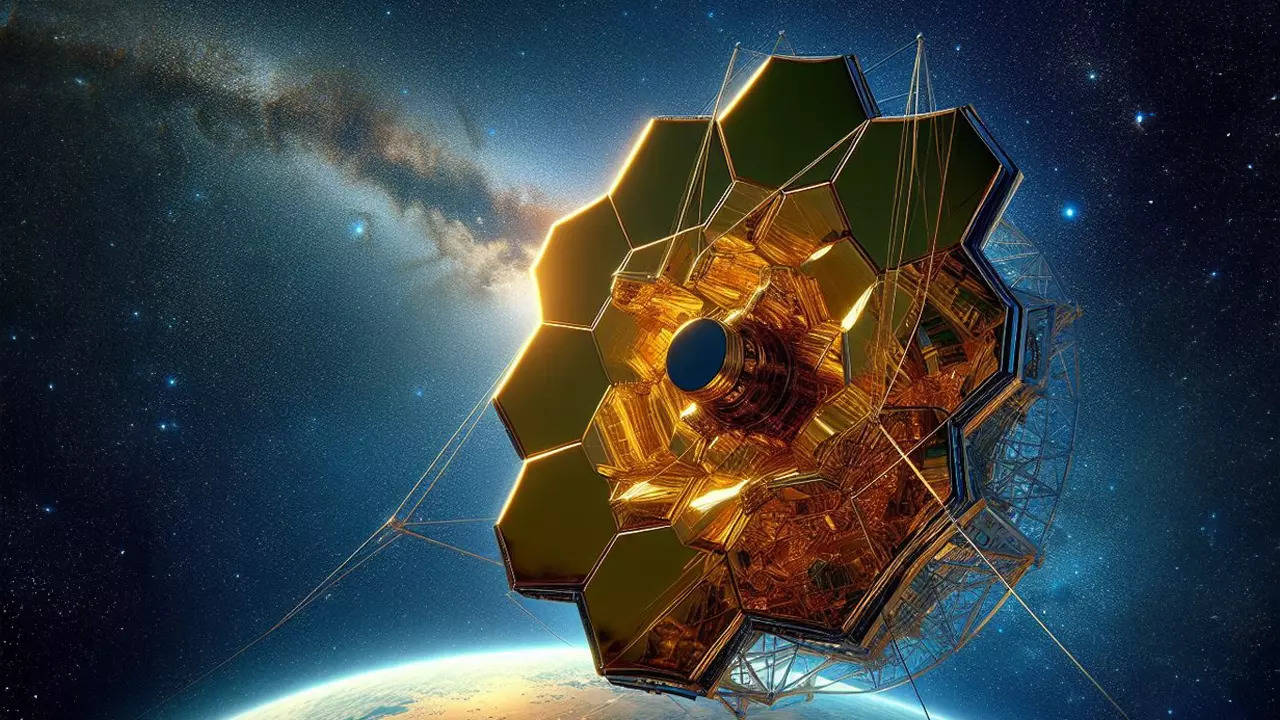NEW DELHI: Nasa’s James Webb Space Telescope (JWST), a cornerstone in modern astronomical observation, is preparing to embark on a groundbreaking study of the auroras lighting up the polar skies of Uranus and Saturn. Researchers from the University of Leicester are at the helm of this venture, with the goal of delving deeper into the phenomena behind these mesmerizing cosmic light displays.
Henrik Melin, who will lead the Uranus investigation, expressed his enthusiasm: “I am thrilled to have been awarded time on this remarkable observatory, and this data will fundamentally shape our understanding of both Saturn and Uranus.” The research teams aim to utilize the $10-billion JWST to dissect the intricate processes that give birth to the auroras over these distinct celestial bodies, a Space.com report said.
Auroras, known on Earth as the Northern and Southern Lights, are caused by charged particles from the sun colliding with the planet’s magnetosphere. This interaction, vibrant and full of energy, paints the polar skies in dazzling colors. However, the auroral displays on Uranus and Saturn remain an enigma, with much left to uncover about their origin and characteristics.
The auroras of Uranus, in particular, are under scrutiny. A previous team from the University of Leicester, including PhD student Emma Thomas, made a significant breakthrough last year by confirming the presence of infrared auroras on Uranus. This ice giant’s unique tilt, a result of a colossal impact, positions its auroras in an unusual equatorial alignment, challenging our conventional understanding of these light shows, the Space.com report said.
These upcoming JWST observations are anticipated to address the lingering mystery: Do Uranus’s auroras contribute to its surprisingly warm temperature? Emma Thomas hypothesized, “One theory suggests the energetic aurora is the cause of this, which generates and pushes heat from the aurora down towards the magnetic equator.”
The study of Saturn’s auroras is equally compelling. The gas giant’s northern auroral region will be observed for an entire Saturnian day by a team led by Luke Moore from the Boston University Center for Space Physics. By assessing the atmospheric energies driving these auroras, researchers hope to unravel the sources of charged particles within Saturn’s atmosphere.
Both investigations, utilizing JWST’s Near-Infrared Camera (NIRCam), not only aim to enhance our comprehension of these giant planets but also to shed light on the broader mechanics of auroral phenomena throughout the solar system and beyond. The findings may also offer insights into the magnetic fields and atmospheres of a majority of discovered exoplanets, which share similarities with Neptune and Uranus.
Henrik Melin, who will lead the Uranus investigation, expressed his enthusiasm: “I am thrilled to have been awarded time on this remarkable observatory, and this data will fundamentally shape our understanding of both Saturn and Uranus.” The research teams aim to utilize the $10-billion JWST to dissect the intricate processes that give birth to the auroras over these distinct celestial bodies, a Space.com report said.
Auroras, known on Earth as the Northern and Southern Lights, are caused by charged particles from the sun colliding with the planet’s magnetosphere. This interaction, vibrant and full of energy, paints the polar skies in dazzling colors. However, the auroral displays on Uranus and Saturn remain an enigma, with much left to uncover about their origin and characteristics.
The auroras of Uranus, in particular, are under scrutiny. A previous team from the University of Leicester, including PhD student Emma Thomas, made a significant breakthrough last year by confirming the presence of infrared auroras on Uranus. This ice giant’s unique tilt, a result of a colossal impact, positions its auroras in an unusual equatorial alignment, challenging our conventional understanding of these light shows, the Space.com report said.
These upcoming JWST observations are anticipated to address the lingering mystery: Do Uranus’s auroras contribute to its surprisingly warm temperature? Emma Thomas hypothesized, “One theory suggests the energetic aurora is the cause of this, which generates and pushes heat from the aurora down towards the magnetic equator.”
The study of Saturn’s auroras is equally compelling. The gas giant’s northern auroral region will be observed for an entire Saturnian day by a team led by Luke Moore from the Boston University Center for Space Physics. By assessing the atmospheric energies driving these auroras, researchers hope to unravel the sources of charged particles within Saturn’s atmosphere.
Both investigations, utilizing JWST’s Near-Infrared Camera (NIRCam), not only aim to enhance our comprehension of these giant planets but also to shed light on the broader mechanics of auroral phenomena throughout the solar system and beyond. The findings may also offer insights into the magnetic fields and atmospheres of a majority of discovered exoplanets, which share similarities with Neptune and Uranus.
Denial of responsibility! Swift Telecast is an automatic aggregator of the all world’s media. In each content, the hyperlink to the primary source is specified. All trademarks belong to their rightful owners, all materials to their authors. If you are the owner of the content and do not want us to publish your materials, please contact us by email – swifttelecast.com. The content will be deleted within 24 hours.


